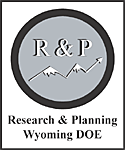Wyoming Adds 3,000 Jobs in October 2010
The Research & Planning section of the Wyoming Department of Employment has reported that total nonfarm employment in the state increased by 3,000 jobs (1.1%) from October 2009 to October 2010. The state's seasonally adjusted1 unemployment rate decreased very slightly from 6.8% in September to 6.7% in October and was lower than its October 2009 level of 7.4%. Wyoming's unemployment rate has remained between 6.7% and 6.8% in each of the past five months.
Over the year, Wyoming gained 3,000 nonfarm jobs (1.1%). Natural resources & mining (including oil & gas) posted the largest job gains (3,100 jobs, or 12.8%) followed by government (including public schools, colleges, & hospitals; 1,400 jobs, or 1.9%), educational & health services (900 jobs, or 3.5%), wholesale trade (600 jobs, or 7.1%), and transportation & utilities (600 jobs, or 4.4%). Job losses continued in leisure & hospitality (-1,700 jobs, or -5.3%), retail trade (-1,100 jobs, or -3.6%), and professional & business services (-300 jobs, or -1.7%).
From September to October, Wyoming nonfarm employment fell by 3,700 jobs (-1.3%). This level of decrease is consistent with normal seasonal patterns. Seasonal job losses in leisure & hospitality (-4,800, or -13.6%) and retail trade (-700 jobs, or -2.3%) more than offset seasonal gains in government (including public schools, colleges, & hospitals; 1,000 jobs, or 1.4%), natural resources & mining (including oil & gas; 600 jobs, or 2.2%), and educational & health services (400 jobs, or 1.5%).
Unemployment rates fell from October 2009 to October 2010 in all but one county (Teton County's unemployment rate rose from 8.1% to 9.0%). From September to October, most county unemployment rates decreased slightly. The largest decreases occurred in Washakie County (down from 5.6% to 5.0%) and Weston and Goshen counties (both down from 5.8% to 5.3%).
1Seasonal adjustment is a statistical procedure to remove the impact of normal regularly recurring events (such as weather, major holidays, and the opening and closing of schools) from economic time series in order to obtain a better understanding of changes in economic conditions from month to month.
